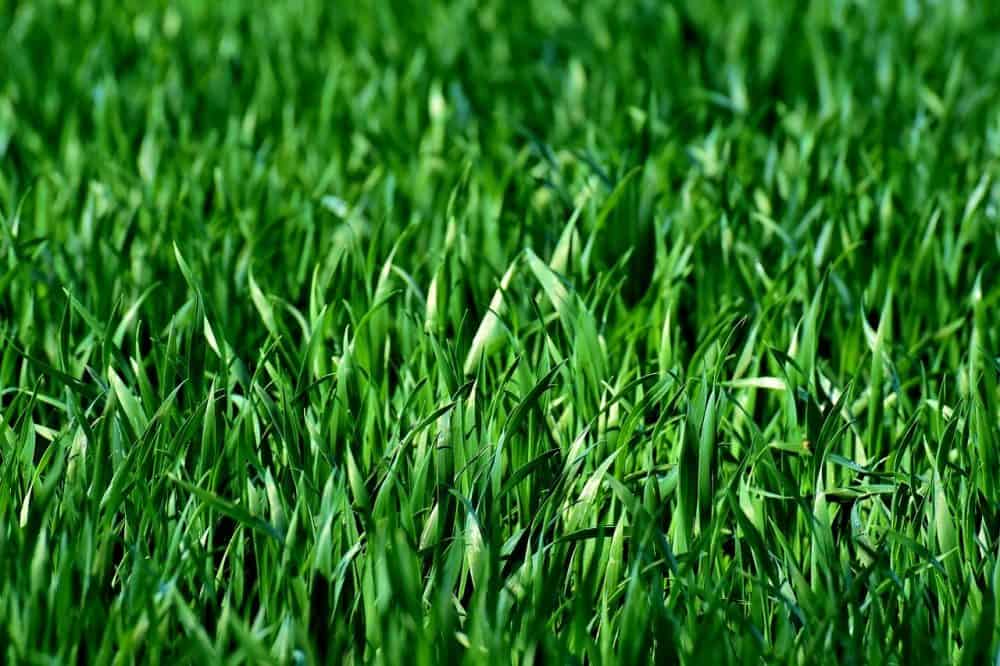You can begin, on a small scale, to improve the soil by working in lots of compost or other organic matter. Choose flower or vegetable beds that you want to plant this year and spread a three or four inch layer of mulch on top. Work it in to a depth of at least six inches, deeper if you can. Continue to do this year after year to help "fluff" up the soil. If you start small, in beds you plan to use immediately, you can spread your soil improvement efforts throughout the yard over several growing season.
Persistence will pay off and eventually you'll have a loamy-type soil that will drain well yet hold important nutrients and moisture. To improve your soil, you'll need to add 6 to 8 inches of organic matter to the entire bed. Grass clippings (as long as they haven't been treated with chemicals), shredded leaves, rotted manure, and compost are all perfect choices. The organic matter needs to be mixed into the top 6 to 12 inches of soil.
Digging it in and mixing it with a shovel is a great way to do this, as it moves a lot of earth without pulverizing the soil particles the way tilling can. However, if digging is just too hard on your back, using a tiller is a fine method. Organic matter in soil serves as food for earthworms, insects, bacteria and fungi-they transform it to soil nutrients and humus. Through this decomposition process, materials are made available as foods to growing plants. In finely textured clay soils, organic material creates aggregates of the soil particles, improving drainage and making it easier to work.
Earthworms are especially helpful in making and keeping soil porous and well draining, said Brewer. Cover crops, also called green manure crops, help loosen clay or compacted soils with their roots and by adding organic matter. They also prevent nutrient loss and erosion during the non-growing season.
Leguminous cover crops, such as winter rye, alfalfa, hairy vetch and clover, which add nitrogen to the soil, are usually planted at the end of summer or early fall. Over the years of gardening and landscaping on this property, we continually had to battle the clay soils. Best is to add organic matter, particularly compost. Be sure and add when your clay soil is dry, as working in wet clay is not only quite messy but will compact it even further. Peat moss is sometimes recommended as an addition, but this breaks down quickly in wet and clay soils, and can create an undesirable bog. As an aside, glomalin also benefits the soil, and earth in general, by storing carbon.
Along with adding compost, a second strategy for adding organic matter to my clay soil is cover cropping. I plant cover crops any time the beds in my garden would otherwise be unplanted or fallow. Fallow periods provide little additional organic biomass while allowing the decomposition of organic matter in the soil to continue. Cover crops provide me with a variety of services. They contribute to the improvements in soil structure that I described earlier.
And they can smother weeds and even suppress weed seed germination. Many cover crops will also suppress pathogenic nematodes, for example root knot nematode. During the initial, pre-garden phase of my soil improvement plan, I managed to break up 10 inches of hard-packed clay with endless swings of my trusty mattock. I spread compost over the surface of the beds an inch at a time and rototilled it in.
How To Break Up Hard Clay Soil I was careful not to work the clay when it was too wet, because clay worked wet can result in some tenacious clods, very reluctant in their willingness to ever come apart again. I tried to work the compost deep into the soil, and along with it, I added lime and phosphorus, the clay soil in my garden needing both. When surface-applied, neither of these materials moves down through the soil, so incorporation to ample depth is very important to permit roots to grow into the subsoil. After 3 to 4 inches of compost, I had the "raised bed" I wanted. Bark, sawdust, manure, leaf mold, compost and peat moss are among the organic amendments commonly used to improve clay soil.
Two or three inches of organic materials should be spread and rototilled, forked or dug into the top six or seven inches of your garden beds. Amend clay soil by adding plenty of organic material, such as well-aged compost, sawdust (but not from pressure-treated wood), composted manure or leaf mould . For example, when making a new bed, spread several inches of organic material over the area and dig it in at least eight inches deep. When moving or adding new perennials to an existing bed, throw a shovelful of compost into the planting hole.
Following any of these treatments applying 6X in early spring gets your garden off to the perfect start for the season. 6X is a well-known and well-loved alternative to traditional farmyard manure which takes a lot of the effort out of spreading manure on the garden. One 15kg sack is equivalent to six or more sacks of traditional bagged farmyard manure and treats up to 184 sq metres . While working with clay is tough on gardeners, the biggest issue for plants is the slow drainage. Improving its structure improves drainage; planting in raised beds made with good soil also helps. With careful management and generous additions of organic material, clay soil will improve over time — lots of time.
The soil will become more workable, but expect to spend a few years amending clay before you notice an appreciable difference. Common soil amendments include compost, grass clippings, straw, shredded leaves, rotted manure and dried seaweed. Walking on your lawn or garden when its wet is a common cause. Heavy, beating rains also drive clay particles together. Salts from fertilizers and winter de-icing solutions build up in heavy clay as well. Some people claim you can loosen clay by adding gypsum to it.
The theory is that gypsum binds clay particles together to make bigger particles, providing more space for air, water, and roots. While this works to some extent, adding gypsum alone isn't enough for most gardens. The best way to loosen and improve clay soil is by adding lots of organic matter. You will need to work at it over the years by repeating the process though. Baked clay is almost impossible to break up, rotivate or dig, it's easier to spread the organic matter and grit and wait until the worms have done some of the work for you. You'll get a variety of answers but here's my contribution!
IMO the most important thing to add to clay soil is organic matter - garden compost, well rotted manure, composted bark, mushroom compost etc. Adding grit, gravel or sand just seems to make the clay gritty but doesn't contribute to the "workability" of the soil, in my experience. Another method to increase organic matter in clay soils is with cover crops. These are crops planted as you prepare beds, for a season or year prior, or in fallow periods between annual crops such as flowers and vegetables.
They consist of small grains and grasses like buckwheat, ryegrass, and oats. Legumes, such as clover, also benefit by "fixing" nitrogen from the air for use in the soil. Cover crops have additional benefits such as suppression of many weeds.
Surprisingly often, people imagine that the proper way to improve dense, clay soil is to add the opposite kind of mineral material—sand. After all, loamy soils, viewed as ideal garden soil, are a mixture of sand and clay. Unfortunately, when sand is added directly to clay, the result is something that more accurately resembles concrete. The reason loamy soils are great for plants is that they have a large ratio of organic material in them as a foundation for the sand and clay.
Without lots of organic material, clay plus sand equals an awful garden. Clay soils are best improved with the addition of compost and other organic materials only. Heavyclay and loosening compacted soil by changing the particle size.
Gypsum will improve heavy clay while also removing sodium from saline rich soil, exchanging sodium for calcium. Gypsum is not ideal for every situation though, such as clay layered with coarse soil types. Make sure to take note of the clay type before adding gypsum. Gypsum must be tilled in or mixed with soil when added to the planting hole; a topical application will have little effect. It is highly recommended to add a fertilizer or amendment with beneficial mycorrhizal 3-6 months after using gypsum to repair any damage.
Compaction is most likely to occur with heavier soils like clay and loam, but when heavy equipment is used, sandy soils can become compacted. These are soil particles that are packed closely together. The problem may be compounded by events that have happened to the soil over the course of years. The pore spaces are reduced to the point that air and water cannot move freely and plant roots cannot grow easily into the surrounding soil. The soil could remain overly wet longer than is healthy for the plants growing there.
Commercial products, such as ClayMend, are also available to amend clay soil by introducing beneficial soil microbes and supplying them with nutrients. The company states that a blend of organic acids gathers ultra-fine clay particles and then microbes work to secure them together. This process opens the soil, allowing it to breathe. The beneficial microbial activity increases and plant roots are able to establish themselves in the restructured soil.
Nutrients that have been locked away become free to be attached to the organic material and the clay structures for easy access by the plant roots. However, major losses in soil organic matter content can take place when the soil is inverted or mixed annually by tillage. Extensive tillage stimulates microbial activity , and the consumption of mass quantities of organic matter ensues.
After your clay soil becomes more friable and you have provided a deep root zone for your garden plants, you should consider reducing tillage. Because the soil remains undisturbed, fertilizers and other soil amendments do not become homogenized in the tillage layer. Plant feeder roots, therefore, tend to proliferate in the top 2 inches of fertile topsoil.
Clay soil is both the best and the worst soil you can have. It is more fertile than sandy soil, but it drains slowly, is difficult to dig into and it does not allow roots to easily grow into it. Physically breaking up clay soil will only work until the first rain, when it compacts down again.
You need to both break it up and add organic matter for the soil to maintain its newly lightened texture. For best results, break up and amend the soil at least two weeks before planting. By aerating your clay soil and adding an amendment, you can break it down fast and encourage new growth. Wait until the ground's completely wet or dry, since it'll be harder to work with soil that's partially damp.
Then, turn your soil by digging up small amounts where you want to put plants to aerate it. Once you've turned the soil, mix in an amendment, like compost, biochar, manure, or a commercial soil conditioner, to add some extra nutrients. If your plants still struggle to grow, lay an extra layer of topsoil over the clay. Mulching – Clay soils can tend to speed water runoff because water isn't absorbed as quickly into clay soils as it is other soils. Clay soils also tends to stick to the bottoms of your shoes, which can make a mess when you go indoors. By adding a layer of mulch to clay soil, you not only help keep the house clean, but can reduce the number of weeds that sprout.
As mulch decomposes,it will enhance nutrition and water retention, which ultimately allows for better plant growth. Mulch will slow down water run-off allowing clay soil more time to absorb, and store, water. A layer of mulch is also cooler than exposed soil which helps to reduce temperatures overall in the garden. Mulch takes years to break down, but over time the organic material filters through the soil, breaking up clay particles and creating a blended soil with lots of organic material. Make sure not to choke the crown of the plants- a mulch application of 3"-4" over the whole planting bed is ideal.
Gypsum is easily applied to the soil surface with a regular lawn spreader. It's an ideal amendment for improving soil structure and relieving compaction in existing lawns and gardens. Clay consists of minute mineral particles that tend to cling tightly together. Because there are lots of them they have a big surface area which efficiently hangs on to water and nutrients. Soils with larger particles have more air space and allow the passage of water more freely. So if you can make the soil particles in a clay soil larger you improve drainage and the texture.
You can't really overdo the amount of compost added to clay soils. For a lawn and landscape that is a quarter acre, just increasing the soil organic matter from 2 to 3 percent would take 5000 pounds of an amendment! Don't get discouraged by this, as adding some is better than none. You can add organic matter over time, and you can deal with small areas or beds at a time. If you have a local compost facility, check to see if you can have a bulk load delivered.
This is cheaper overall and avoids having dozens of plastic bags to dispose of. Your soil test or extension agent can help you determine the right amount of organic matter for your soil. As a general rule, when possible, add a layer of 3 to 6 inches of organic matter on your soil before planting, and work it down into the top 10 to 12 inches—where most roots grow. In following years, build on your efforts by adding 1 to 3 inches of organic mulch as a topdressing each year.1 As it decomposes, it continues to gradually improve clay soil. Clay's potential as one of the best soil types for plant growth lies in its unique properties. Managed well, clay soil typically requires less irrigation and less fertilizer, and leads to healthier plants all around.
Adding top soil and tilling in is great advice but a big job for two acres. Sand or gypsum tilled in helps break up clay and again is a big job on two acres. If the time and budget allows those are your best options.
Spend your summer getting the grade the way you want and plant a cover crop this fall. It is a bit late to do it now with the Southern summer on us. In the early spring till under the cover crop, or green manure, to add some organic matter to the clay. That will get you started on developing some top soil and have you ready for spring seeding.


























No comments:
Post a Comment
Note: Only a member of this blog may post a comment.